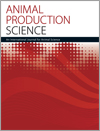
Animal Production Science
Volume 62 Number 18 2022
AN21516A perspective on animal welfare of grazing ruminants and its relationship with sustainability
Grazing is often considered more animal welfare friendly than housed or feedlot type systems, especially in relation to the behavioural and mental state domains within a more ‘natural’ environment. However, the welfare status, productivity level and environmental impact of grazing ruminants can differ with factors, such as management practices and environmental conditions. Therefore, it is important to identify the potential synergies and trade-offs with other components of sustainability.
AN21516 Abstract | AN21516 Full Text | AN21516PDF (668 KB) Open Access Article
AN21501Associations of digestibility with phenotypic and genetic variation in methane production in Angus cattle
Cattle and sheep emit methane, a potent greenhouse gas, as part of the fermentation process of feed digestion. Differences among animals in their ability to digest feed were found and were associated with variation in the three methane emission traits studied. Feeding and breeding interventions to reduce methane emissions may change rumen physiology and reduce the extent of digestion of feed by cattle, which may be undesirable.
AN22007Increasing levels of microalga supplementation in diet on in vitro ruminal biohydrogenation and fermentation
Diseases related to consumption of animal products have come to the fore today and it is important to increase product quality. In this study, changes were made to animal feeds so as to increase some fatty acids, which have significant positive effects on health. This change was achieved by adding a rich source of omega 3 to the diet, which has been used frequently in recent years, and the most appropriate dose was determined for adding this source to the diet.
AN22113Calcium and magnesium supplementation of ewes grazing pasture did not improve lamb survival
 , Shawn R. McGrath
, Shawn R. McGrath  , Samuel Scarlett, Marie Bhanugopan, Janelle E. Hocking Edwards, Emma Winslow, Serina Hancock, Andrew N. Thompson, Gordon Refshauge and Michael A. Friend
, Samuel Scarlett, Marie Bhanugopan, Janelle E. Hocking Edwards, Emma Winslow, Serina Hancock, Andrew N. Thompson, Gordon Refshauge and Michael A. Friend
Calcium and magnesium deficiencies potentially contribute to the average 20% mortality of new-born lambs. This study investigated whether a loose-lick mineral supplement could improve lamb survival in ewes grazing pastures, but found no increase in survival. Further studies under a wider range of grazing conditions and with higher levels of supplement intake are needed to make conclusive recommendations on whether and when calcium and magnesium supplementation is effective.
AN22113 Abstract | AN22113 Full Text | AN22113PDF (370 KB) Open Access Article
AN22100Implications of negative energy balance in lactating Barki and Rahmani ewes
 , M. A. Sharaby, M. H. Salem and A. M. A. Rashad
, M. A. Sharaby, M. H. Salem and A. M. A. Rashad 
Lactation presents a critical stressful period in the dam productive life because of the high nutritional and other managemental requirements necessary for milk production. This study was performed to explore the impact of negative energy balance associated with lactation on the milk composition, metabolic profile and reproductive traits of two sheep breeds, to assess their sustainability to the expenditure of milk production during lactation season.
AN21458Effects of dietary flaxseed oil with or without products with antioxidant properties on pig performance, carcass characteristics, meat quality and oxidative stability
 , Teresinha Marisa Bertol, Arlei Coldebella, Anildo Cunha Junior
, Teresinha Marisa Bertol, Arlei Coldebella, Anildo Cunha Junior  , Bárbara Cristina Silveira-Almeida, Juliana Bürger Rodrigues, Daniel Barrera-Arellano, Helena Teixeira Godoy, Adriana Dillenburg Meinhart, Leandro Daniel de Paris and Valdemiro Carlos Sgarbieri
, Bárbara Cristina Silveira-Almeida, Juliana Bürger Rodrigues, Daniel Barrera-Arellano, Helena Teixeira Godoy, Adriana Dillenburg Meinhart, Leandro Daniel de Paris and Valdemiro Carlos Sgarbieri
The present study evaluated the effects of including flaxseed oil and natural products with antioxidant properties in swine diets. The dietary modifications had effect on carcass quality, meat quality and a lipid profile modified with increased α-linolenic fatty acid. The increase in omega-3 reduced the oxidative stability of meat and vitamin E was the most efficient antioxidant in minimising lipid oxidation. Among the other antioxidants tested, the tilapia hydrolysate and the grape seed extract showed potential for further studies.
Pelleted total mixed ration containing 15% ground wheat straw improved dry matter intake, average daily gain, feed efficiency, carcass quality and dressing percentage of fattening lambs. Wheat straw based pelleted total mixed ration improved rumen health without compromising rumen pH. Pelleted total mixed ration did not have any adverse effects on rumen health and welfare.
This study is a systematic analysis of the Brazilian dairy industry comparing data from scientific literature and breeders’ association official controls, in order to understand differences between animals used in experiments and those in breed control assessments. There was a considerable lack of official data for most traits, and a large difference between official data and the literature. Literature data need to be collected that better represent what is happening at the field level in the national dairy industry.
AN21605Variability in practices for drinking water vaccination of meat chickens against infectious laryngotracheitis
 , Awol M. Assen, Ashley Etherington, Mark Stillman, Sheridan Alfirevich, Priscilla F. Gerber, Alex-Kate Langfield and Stephen W. Walkden-Brown
, Awol M. Assen, Ashley Etherington, Mark Stillman, Sheridan Alfirevich, Priscilla F. Gerber, Alex-Kate Langfield and Stephen W. Walkden-Brown
Successful mass vaccination of young meat chickens against infectious laryngotracheitis is extremely important for bird welfare and productivity. Drinking water vaccination against this disease is problematic and often associated with apparent failure or vaccine reactions. Understanding the variation in drinking water application techniques will assist to improve vaccination success.
AN21605 Abstract | AN21605 Full Text | AN21605PDF (1.2 MB) Open Access Article



